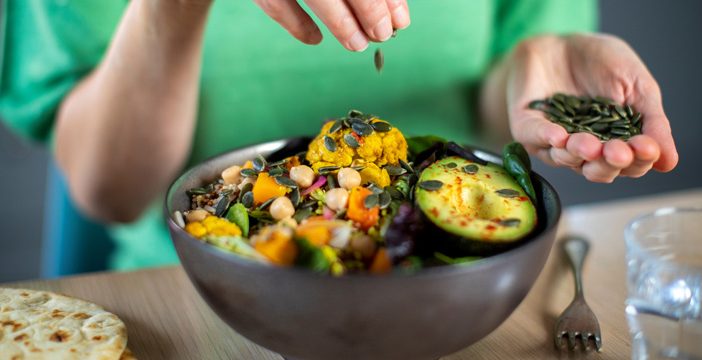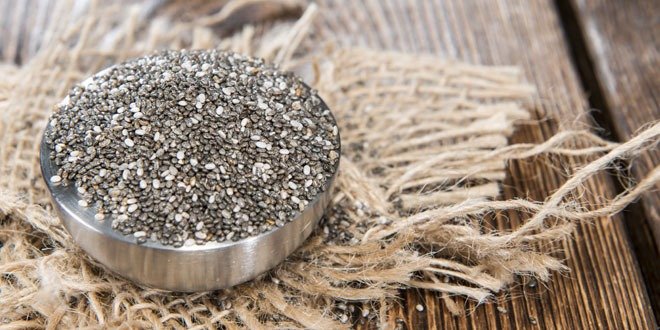
Whether you’re looking to add some healthy fats, protein, fibre or antioxidants to your next snack or meal, seeds make a quick and easy option. When combined with a healthy diet, research shows that seeds can have significant health benefits, including helping to stabilize blood sugar, reducing blood pressure and bad cholesterol (LDL), and increasing good cholesterol (HDL). Here’s a look at the best seeds for diabetes, and how to incorporate them into your meal plan.
What are the different types of seeds and their health benefits?
Here are some nutrient-packed seed options to choose from:
Chia seeds: These tiny black or white seeds come from a plant native to Central America called the Salvia hispanica. In addition to being packed with vitamins and minerals, chia seeds are an excellent source of fibre, protein and antioxidants. They can be eaten ground or whole.
Flaxseeds: Also known as linseeds, these seeds are nutty in flavour with a texture similar to sunflower seeds. Flaxseeds are a good source of fibre, healthy omega-three fats and antioxidants. Ideally, flaxseeds are best eaten ground, as the fibrous outer shell of the seed is not easily digestible.
Hemp seeds: The seeds of the hemp cannabis sativa plant are packed with protein, minerals and vitamin E. The seeds contain no trace amounts of THC from cannabis and are rich in essential fatty acids. Hemp seeds can be eaten raw, cooked or roasted. Oil made from hemp seed is a healthy option for cooking and dressing salads too.
Pumpkin seeds: A popular seed variety, pumpkin seeds are good sources of phosphorus, monounsaturated fats and omega-6 fats. They can be eaten with or without their shells, but opt for unsalted, natural varieties to avoid unnecessary sodium.
Sesame seeds: Even in small portions, sesame seeds contain calcium, copper, iron, magnesium, manganese, selenium, thiamine, and zine. On top of being used to make sesame oil and tahini, sesame seeds can be incorporated into main meals and healthy desserts.
Sunflower seeds: These seeds provide good levels of omega-6 and monounsaturated fats, while helping reduce inflammation. Like pumpkin seeds, they can be eaten with or without their shells and are an excellent source of Vitamin E. They too are best when consumed without added salts.
The oil derived from sunflower seeds is another good option for cooking. Read more on sunflower and other healthier cooking oils for diabetes.
What is the impact of seeds on blood sugar?
Seeds are low in carbohydrates and high in fibre, making a good combination to help keep blood sugars in check.
The following chart provides the carbohydrate, fibre and calorie content of common seeds.
| Seeds | Carbs | Fibre | Calories |
|---|---|---|---|
| Chia | 12g | 10g | 138 calories |
| Flax | 4g | 3.8g | 74 calories |
| Hemp | 2g | 1g | 90 calories |
| Pumpkin | 4g | 2g | 36 calories |
| Sesame | 4g | 2g | 104 calories |
| Sunflower | 4g | 2g | 102 calories |
*Serving size = 2 tablespoons
How do I use seeds?
Seeds are super versatile. Sprinkle them on salads, yogurt and oatmeal, or add them to smoothies and soups. They also make great additions to homemade muffins and breads. Chia in particular, can absorb liquid quickly making it a great addition to overnight oats and puddings.
You can use seeds in homemade granola and trail mix or combine a handful of seeds with fresh fruit for a satisfying snack. Try making your own seed butter by blending pumpkin, hemp or sunflower seeds in your food processor until smooth.
Here’s a tasty recipe for a Berry Power Smoothie with Chia and some flaxseed sweet potato breakfast muffins.
You can also make your own tahini by grinding sesame seeds with some oil in a food processor until smooth, or you can find several premade options in the grocery store. Tahini can be used as a sauce, for instance, with roasted carrots or as a delicious dressing for a grain bowl.
Seeds should be stored in a cool, dark place at room temperature, or in the case of ground flaxseed, in a tightly sealed container in the refrigerator. Keep in mind that despite all their nutrients, seeds contain a concentrated amount of fat and calories so they should be consumed in moderation (i.e., 2 tablespoons to one-quarter cup three times per week).
Since ancient times, seeds have been an important food source, so we shouldn’t miss out on their health benefits either. In planning healthy meals for your diabetes diet, consider seeds as an easy way to add a nutritional boost. Plus, a seed-rich diet may help you better manage your blood sugars too.



